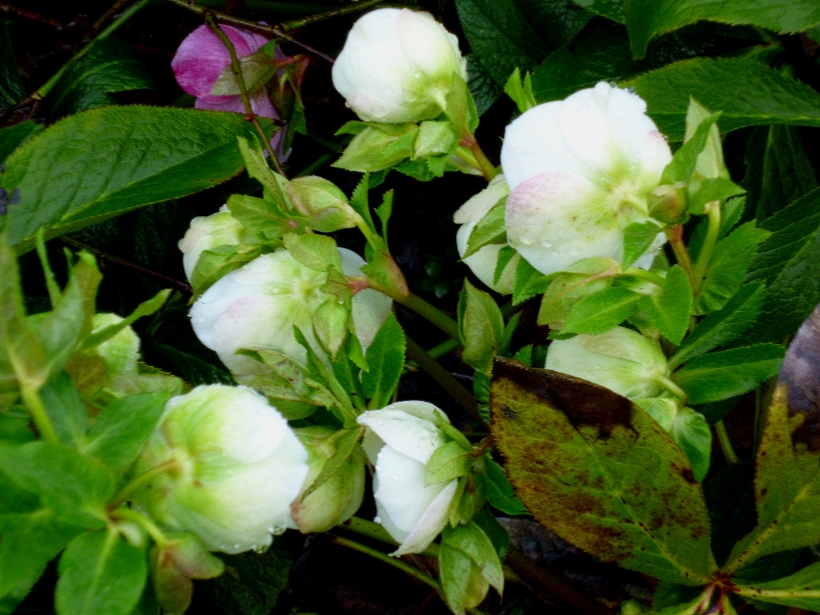
I grew lots of Helleborus Orientalis in Scotland- they loved the rich, moist soil and I loved them. Tall flowers standing straight, and exotic-looking leaves that lasted all year, giving a jungly look to a damp Scottish garden. Beth Chatto’s book about converting her carpark into a gravel garden inspired me to try them here, in much drier and hotter conditions in the summer, but surprisingly perhaps, not so different from Scotland in the winter and spring. Here is a very useful blog article for more information about Hellebores and that makes them tick. Thanks http://www.yougrowgirl.com.
To be honest, I have no idea what I have got growing in the garden, with one or two exceptions. I have accumulated plants on a willy-nilly basis, lots from no-tag bin-end sales over the years, and of course, the one thing about Hellebores is that they self-seed wildly and mix it up, so the only thing that I do is to try and pull out the spindly seedlings and go for those with nice, strong-looking foliage. I also don’t cut old leaves off. Mainly because, even in this dark winter, the hellebores seem to race to produce flowering buds and they are all in place before I have even got round to thinking about trimming the foliage. Actually, mine don’t seem to get too much black fungal action on them, so I live with a few dark splotches.
There are many who say, like Anne Wareham at Veddw, that the very best thing is to grow them in pots and lift them up on stands so that you don’t have to lie down to see into the flowers.
But one of their charms, in my view, is their nodding-ness. The top photograph reminded me of a scene from Margaret Atwood’s ‘The Handmaid’s Tale’ somehow, and below is part of the same group from a different angle. These have all inter-mingled, and it is true that not everyone likes the somewhat muzzy pink colouring that can become the only colour around. But there is an apple-blossom freshness about this pink colouring that I am really appreciating this winter for it’s sense of optimism.

I think I am fondest of the white and the dark red varieties that I have. The single whites are almost indestructible, bearing their flowers with pride for days and days, and even when nearly over, each flower stays put. People seem to suggest that the double varieties are less robust, and I have only a couple, but I would agree with this- and, of course, there are those who find them too frilly. But I think that if you stay with the basic colours, and don’t opt for the new pistachio varieties for example, the straightforward double white is so classic and pretty, it’s hard to beat.
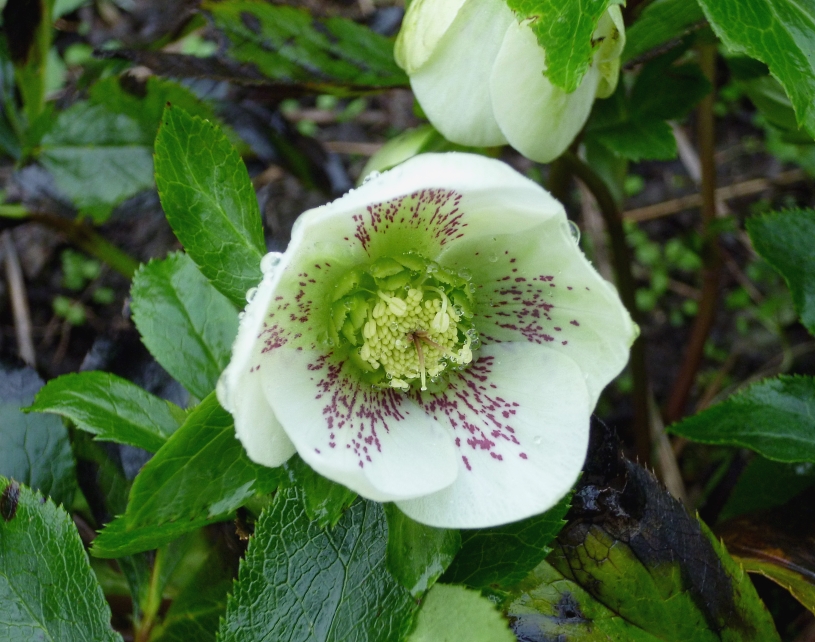
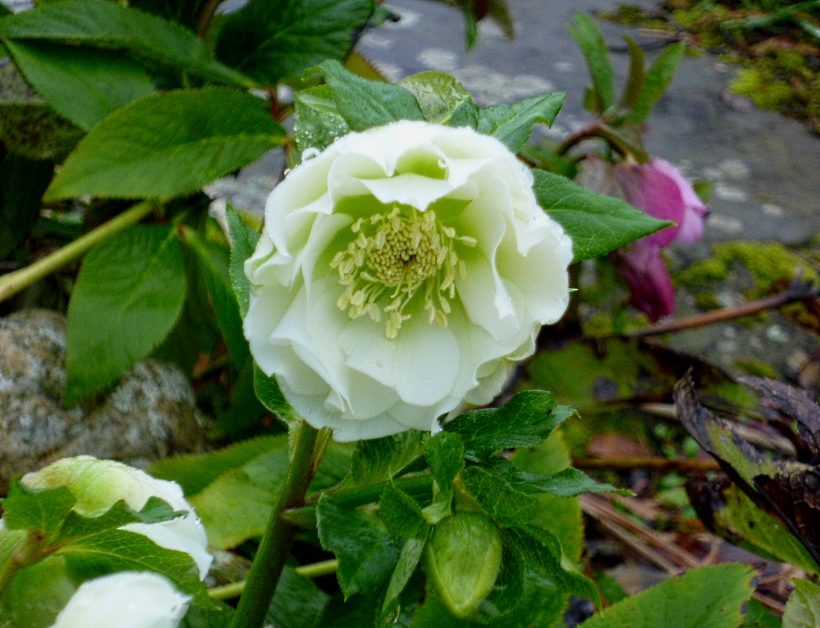
My Stephen Roff ( a very good ebay seller) double red hellebore, bought last year very small, has flowered, and is matched by a single with a lovely collar. It could be that I prefer the collared single….but they are both the richest, darkest burgundy colour which is not reproduced well here in my photographs.
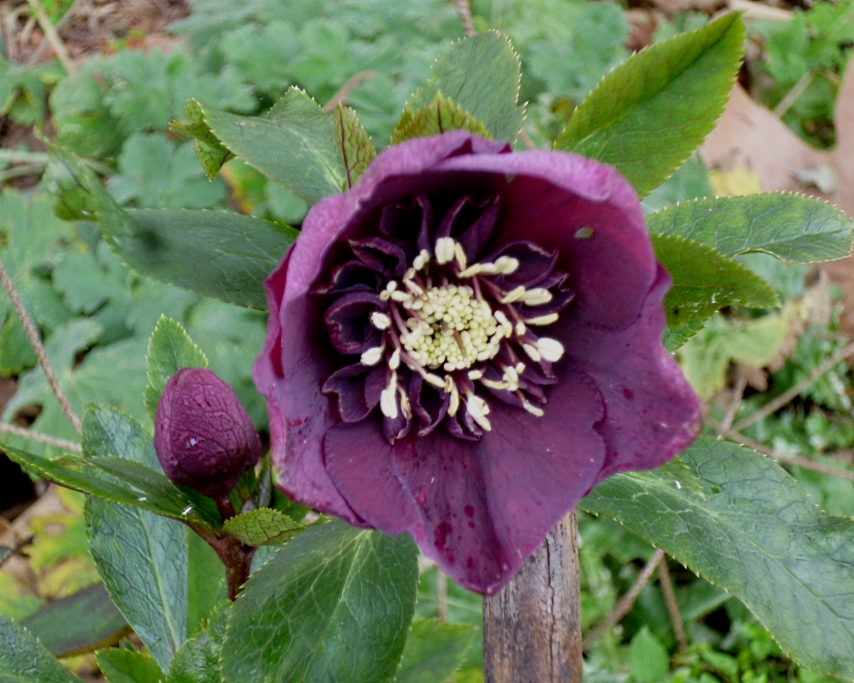
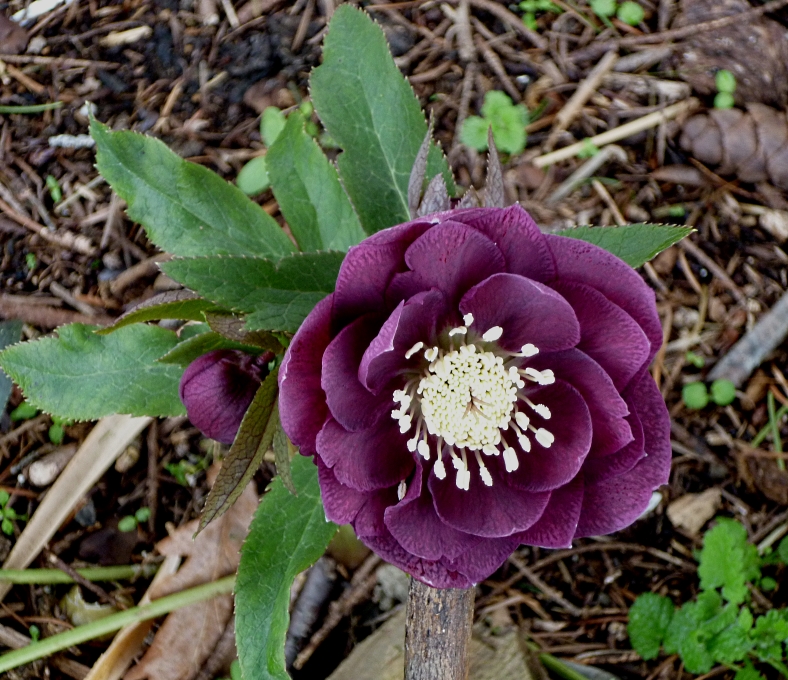
Two species Hellebores that I adore are Helleborus foetidus, and also Helleborus argutiflorus Corsicus. The latter got in with a bad crowd of Hellebores and has now mutated into a not very inspiring cross, but here it was in 2015, with the spikier leaves and the mint-green to white flowers, very simple but gorgeous. I am going to invest in three more plants to start again.
Foetidus, often referred to as the ‘Stinking Hellebore’ doesn’t stink at all to me, and can look amazing as it rises up out of the deadness of the border. Not yet this year, but back in 2015 on a sunny evening, the gorgeous purply-red colouring at the fringes of the petals suddenly came alight- and yes, the flowers do last for at least 2 months.
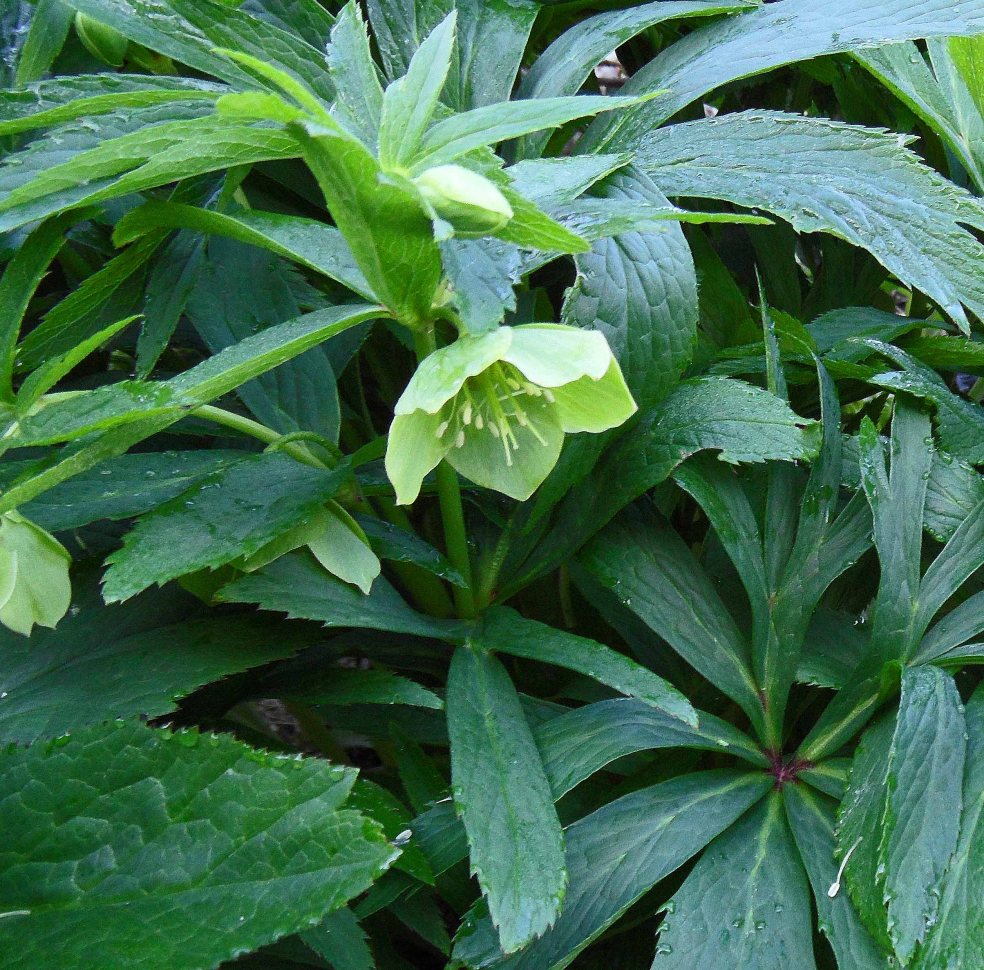

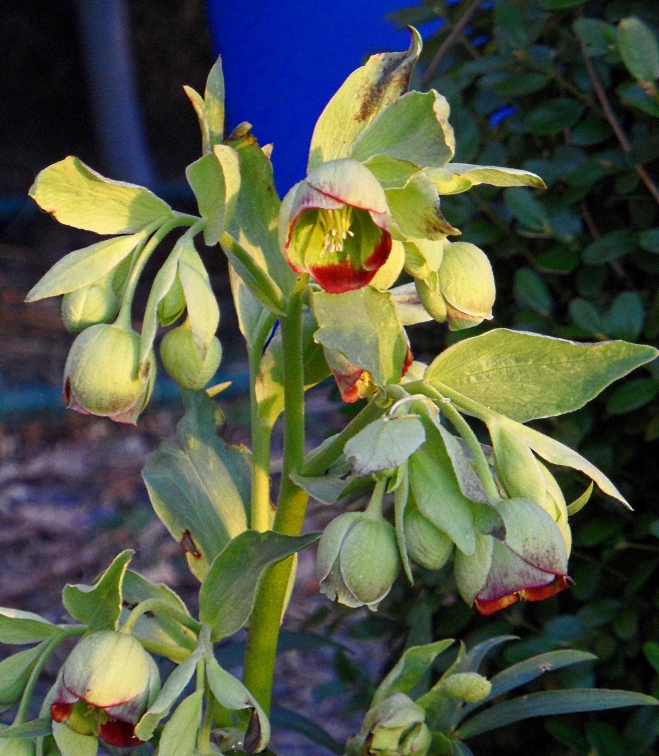
What do you think, Tony Tomeo?
Beauties every one. You have a nice selection. I love the dark red double. The leaves of H. Foetidus smell if you crush them, but why would you do that? Have you come across H.foetidus ‘Wester Flisk’? Its stems are red.
LikeLiked by 1 person
Yes, I have read about Wester Flisk….must give it a go!
LikeLike
Just beautiful, thanks for sharing, so wonderful.
LikeLike
Thank you, I appreciate it!
LikeLike
You are way ahead of me, hardly surprising I suppose. I love the double red. I’m just going to have to be patient a while longer.. !
LikeLiked by 1 person
Everything is sodden but the hellebores are reslly tough….so much grey and dark…..aargh!
LikeLike
We grow those in the nursery because our clients like them, but they do not do as well here as they do in other areas. However, I have noticed them doing better in cooler parts of the Santa Cruz Mountains.
LikeLiked by 1 person
Beautiful hellebores. I love the handmaid comparison!
LikeLike
Thank you Ali….much appreciated!
LikeLiked by 1 person